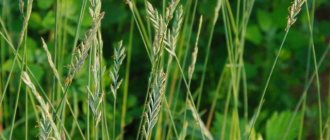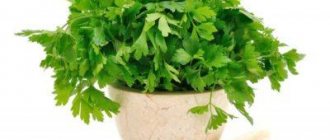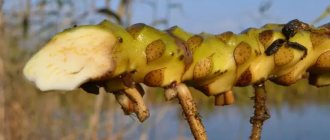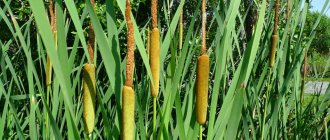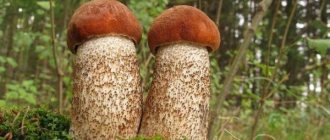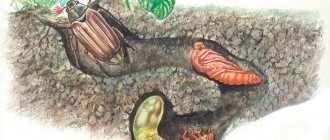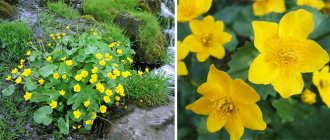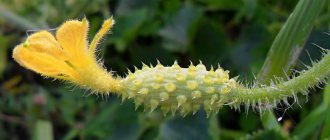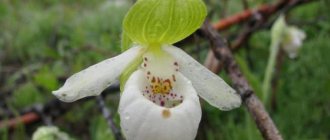Types of motherwort, their description
Photos of the plant will help you find out what motherwort looks like in practice. In general, all types of motherwort have a similar appearance: a straight, tetrahedral stem of a reddish color, pubescent, hollow. The height of the plant is up to 200 cm. The leaves decrease in size from bottom to top, they are five- and seven-partite at the bottom, tripartite closer to the top, and simple at the very top. The flowers are small and can be pink, lilac, or white. Flowering in summer, starting in June. Check out the close-up photo at the end of this article.
Motherwort has 24 species. The most commonly cultivated are the following:
- blue motherwort is a low-growing bush with greenish-gray leaves and light pink flowers. The leaves are densely pubescent with hairs pressed to the bottom.
- Tatarian motherwort - leaves are dissected, flowers are pinkish-violet, along the top of the shoots there is a long edge.
- common motherwort (cordial) - the height of the bushes is up to 200 cm, pubescent with long protruding hairs. The leaves are small at the top, gradually enlarge towards the bottom of the stem, the flowers are pink.
- motherwort five-lobed (shaggy) - the stem is densely covered with protruding hairs. The upper and lower leaves differ in their structure: the upper ones are three-lobed, and the middle and lower leaves are five-lobed.
Of the 24 species of motherwort, only 15 have been comprehensively studied, and only two are allowed for use: motherwort five-lobed and motherwort common.
A close-up photo of the plant will show you in every detail how motherwort grows and blooms.
Description of culture
Motherwort (Leonurus) is a plant from the Lamiaceae family. The motherwort genus is a perennial herbaceous plant.
What does it look like
The stem is straight, branched, pubescent, hollow, tetrahedral, up to 2 m high, reddish in color.
The leaves are opposite, petiolate. Their size decreases gradually towards the top of the stem. The lowermost leaves are 5-7 palmate, the subsequent ones are smaller: trifoliate, trifoliate, at the very top - simple, with two teeth.
The flowers are small, two-lipped (diagnostic sign), pink-violet. In some species they are white and grow from the axils of the upper leaves. Flowering period: June-September.
The fruit looks like a cup with tetrahedral dark brown nuts.
The plant has many names that describe its appearance, medicinal benefits - woolly motherwort, hairy motherwort, hairy motherwort, dog nettle, heartweed, chicken trail, wild nettle, dead nettle, heart grass.
Where does it grow
It grows massively in the Middle East, central Asia, most of Russia, Ukraine, and Belarus. Cultivated as a medicinal herb in many countries.
In the wild, it grows, confirming its name, along roads, on the slopes of ravines, in abandoned summer cottages and gardens.
Where and how does motherwort grow
The place of growth of this medicinal plant is clear from its name - motherwort grows in wastelands, in ravines, near roads, best of all - on sandy and clayey, nitrogenous soils. Very undemanding, adapts well to any conditions, resistant to temperature changes and droughts. Distributed throughout almost the entire continent. It is grown as a medicinal plant in many countries.
Motherwort tincture recipe
To prepare the above medicine you will need:
- 10 gr. dry raw materials;
- 200 ml of drinking water.
Boil the specified amount of water in an enamel pan. Pour this liquid over dry motherwort herb. Keep this mixture in a water bath for a quarter of an hour, then cool well and strain.
In such a healing drink, you need to add a little more boiled water to bring its quantity to the original level. This medicine is taken one third of a glass every 8 hours, but always before eating any food.
Application
- The medicinal properties of motherwort are well known in both folk and official medicine. It can compete with valerian, since it combines a calming effect with a beneficial effect on the heart.
- Motherwort and almost any of its varieties have a hypotensive effect - lowers blood pressure.
- It has a beneficial effect on the heart muscle: it reduces the frequency of heart contractions, while at the same time increasing their amplitude, and affects the expansion of the coronary vessels of the heart, which improves the supply of oxygen to the body.
- Preparations from motherwort are used to treat diseases of the nervous system, thyroid diseases, to stabilize the functioning of the digestive organs, in combination with anticonvulsants.
- In some countries (in Bulgaria, for example), motherwort, an herb (photo in the selection below) has found wider use: as a diuretic, a tonic for tuberculosis, and a blood-restorative for anemia.
- Collections, teas, decoctions, extracts, infusions and tinctures are made from motherwort; you can buy an alcoholic tincture of motherwort at the pharmacy.
- In addition to the fact that motherwort is a valuable medicinal plant, it is also an excellent honey plant. Honey collected from motherwort plantations has a light golden color and a pleasant aroma, does not quickly become candied, also has healing properties, and can be used in the complex treatment of cardiovascular diseases, nervous system disorders, gastrointestinal problems, etc.
Medicinal properties
Used to treat gastric, nervous, and cardiovascular diseases. It has a pronounced sedative effect and is considered more effective than valerian root.
Slows heart rate, has a cardiotonic effect, lowers blood pressure. It is an antispasmodic and has an anticonvulsant effect. Normalizes metabolism, lowers glucose and cholesterol levels. Stimulates the immune system. Relieves swelling.
An excellent choleretic, diuretic, laxative, antimicrobial, wound-healing, tonic.
Preparations containing motherwort are used for:
- algodismenorrhea;
- Graves' disease;
- painful menstruation;
- bronchial asthma;
- vegetative-vascular dystonia;
- pneumonia;
- dyspepsia;
- hysteria;
- cardiosclerosis;
- cough;
- climacteric syndrome;
- flatulence;
- myocarditis;
- sleep disorders;
- neurasthenia;
- neuroses;
- shortness of breath;
- panic attacks;
- increased reactivity;
- psychasthenia;
- hypertension (stages I and II);
- angina pectoris.
Used in dermatology for the treatment of acne, acne, microbial eczema, lichen planus, psoriasis, neurodermatitis. Soothes itching, tightens pores, reduces skin oiliness, and removes unpleasant odor. Reduces hair loss and stimulates hair growth.
The therapeutic effect is not achieved immediately, so to enhance the effect, motherwort is used together with herbs that have a similar effect. The dosage is selected individually, depending on the disease.
Harm and contraindications
- Medicine does not identify any special contraindications to the use of motherwort. In this case, they are standard: do not use without consulting a doctor, do not exceed recommended doses, check for individual intolerance or allergic reactions.
- An overdose of motherwort preparations is most often expressed in gastric disorders: nausea, vomiting, loose stools, and even bloody diarrhea is possible.
Important! It is not recommended to use motherwort-based medications for hypotension (low blood pressure) and bradycardia (slow heartbeat).
Common motherwort.
Properties of motherwort.
Infusion, tincture, extract of motherwort are often used for neuroses, hypertension, angina pectoris, myocarditis, heart defects, cerebral contusions, mild forms of Graves' disease, vegetative-vascular dystonia, etc. But the fact that motherwort is used for cold allergies - in some At this point this was news to me. Motherwort opened up for me for various disorders of the reproductive cycle in women, for uterine fibroids. I also took note that the herbal extract increases the intervals between seizures in epilepsy, this is confirmed by clinical trials. Motherwort helps with tumors and gangrenous wounds. I used motherwort to successfully cure endometritis (though in combination with other herbs). Motherwort is certainly included in douching formulations - from ovarian dysfunction to uterine cancer. And yet, I decided not to dwell on the prescriptions, since for the most part they are of the same type and you can get comprehensive advice at any pharmacy. With a whole bunch of different diseases, it’s practically the same thing. Eg; herb juice is mixed in half with vodka and taken 1 teaspoon 3 times a day before meals for palpitations, cardiovascular neuroses, increased nervous excitability, the initial stages of hypertension, cardiosclerosis, myocarditis, heart defects, cardiac weakness after influenza and other infectious diseases, for headaches, anemia, shortness of breath, gastrointestinal colic, bronchial asthma, painful menstruation and their delay, insomnia, angiodystonic syndromes of the limbs, neurocirculatory dystonia, ischemic brain disease.
Chemical composition
The healing properties of motherwort are due to its chemical composition. Motherwort, a plant (see photo below), contains the following chemicals in fairly large quantities:
- alkaloids (leonurine, stachydrine, etc.);
- flavonoids (quercetin, rutin, etc.);
- saponins;
- glycosides;
- bitterness and tannins;
- vitamins C, A, E, P;
- potassium and calcium salts, very beneficial for the heart.
How to grow motherwort and care for it
- Motherwort is very unpretentious and is well cultivated. This medicinal plant can be grown from seeds.
- In mid-March, 30-40 days before sowing, the seeds must be placed in a damp cloth and left at a temperature of 0 to 4°C.
- After such preparation, the seeds can be sown in open ground to a depth of 1-3 cm with a row spacing of 40-60 cm.
- You can sow motherwort in late autumn.
- Growing and caring for motherwort is very simple: weed, loosen the soil, and prevent the soil from becoming waterlogged.
- You can feed the plants with nitrogen-phosphorus fertilizers.
- Seeds can be collected starting from the second year of life.
Preparation and storage
- You can harvest motherwort from the second year of the plant’s life. This is done during the flowering period by cutting off the upper parts of the stems and side shoots, the length of which should not be more than 40 cm.
- Dry medicinal raw materials in the fresh air in the shade or in a room with good ventilation.
- Modern technologies suggest using special electric dryers for herbs.
- Seeds are collected when most of the leaves have fallen off the plant stem.
